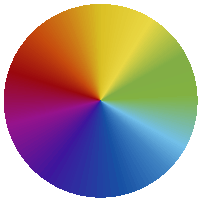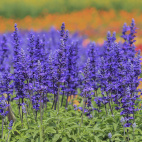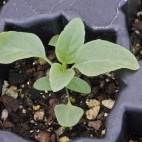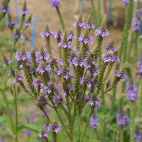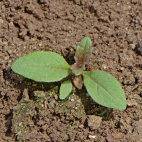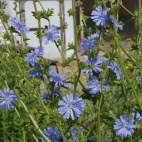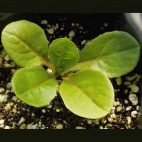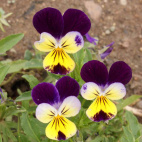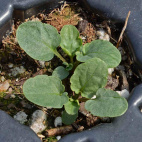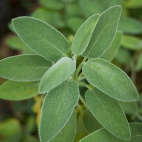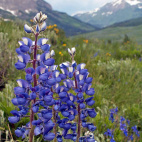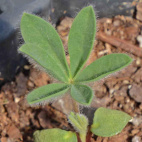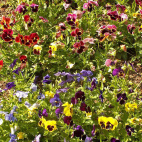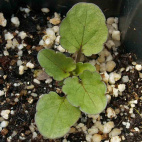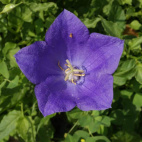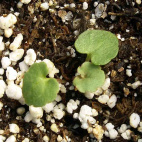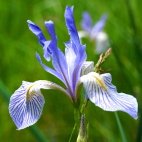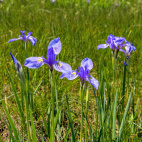Color
Availability
USDA Zone
Region
Type
Duration
Season
Germination
Soil
Sunlight
Height
Use
Narrow Your Search
Color
Availability
USDA Zone
Region
Type
Duration
Season
Germination
Soil
Sunlight
Height
Use
Wildflower Seeds - Mountain Region
The Mountain Region is a diverse area of the Western US that includes the Rockies, Olympics, Sierras, and a host of other mountain ranges. These areas are higher in elevation than the surrounding areas, and so face more extremes in temperature as well as moisture. Generally, the western sides of the mountains are greener than the eastern sides because most of the weather patterns move from west to east. Since the area described here is so vast and variable, you may have to experiment a bit to see exactly what will grow in your micro climate. We cannot tell you exactly what mountain wildflower seeds will grow in your garden because it depends so much on your exact location - a garden a few miles from you may have a totally different climate, rainfall, soils, and daylight. The best thing is to experiment and buy wildflower seeds online, or ask local gardeners or greenhouses if you want localized gardening information.
-
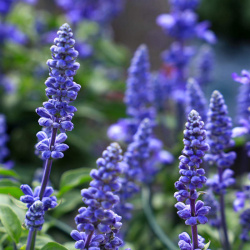 On Sale!
Blue Sage Seeds
Salvia farinacea
Dressed in vivid blue, these wildflower spikes are easy to grow. This perennial comes from Texas, so it can tolerate a lot of heat and drought. This plant has a wild habit and may look a little unruly in a refined garden.Quick View$3.48 Pkt - $15.72 / Oz
On Sale!
Blue Sage Seeds
Salvia farinacea
Dressed in vivid blue, these wildflower spikes are easy to grow. This perennial comes from Texas, so it can tolerate a lot of heat and drought. This plant has a wild habit and may look a little unruly in a refined garden.Quick View$3.48 Pkt - $15.72 / Oz -
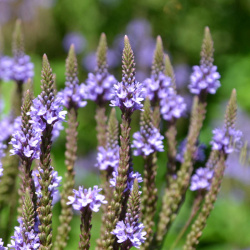 On Sale!
Blue Vervain Seeds
Verbena hastata
These small blue blooms grow on tall stems and are frequently found growing in moist areas. This native attracts a variety of butterflies and is often used in wildflower seed mixes.Quick View$3.48 Pkt - $12.65 / Oz
On Sale!
Blue Vervain Seeds
Verbena hastata
These small blue blooms grow on tall stems and are frequently found growing in moist areas. This native attracts a variety of butterflies and is often used in wildflower seed mixes.Quick View$3.48 Pkt - $12.65 / Oz -
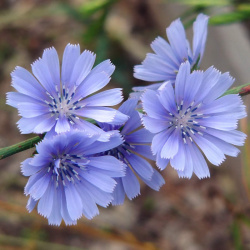 Chicory Seeds
Cichorium intybus
These stunning electric blue blooms are a feast for the eyes. This wildflower is so easy to grow that some gardeners consider it to be invasive. The leaves of the plant are edible and make nutritious salads.Quick View$2.98 Pkt - $6.67 / Oz
Chicory Seeds
Cichorium intybus
These stunning electric blue blooms are a feast for the eyes. This wildflower is so easy to grow that some gardeners consider it to be invasive. The leaves of the plant are edible and make nutritious salads.Quick View$2.98 Pkt - $6.67 / Oz -
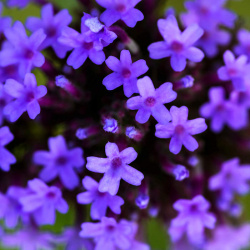 Out Of Stock
Dark Blue Moss Vervain Seeds
Verbena tenuisecta
Originally from South America, these beautiful blue flowers stay close to the ground. Butterflies are attracted to the small blue flowers, so it would be an ideal plant for a small butterfly garden.Quick Viewx
Out Of Stock
Dark Blue Moss Vervain Seeds
Verbena tenuisecta
Originally from South America, these beautiful blue flowers stay close to the ground. Butterflies are attracted to the small blue flowers, so it would be an ideal plant for a small butterfly garden.Quick ViewxDark Blue Moss Vervain Seeds
Verbena tenuisecta
Originally from South America, these beautiful blue flowers stay close to the ground. Butterflies are attracted to the small blue flowers, so it would be an ideal plant for a small butterfly garden.
$2.98 Pkt - $8.93 / Oz -
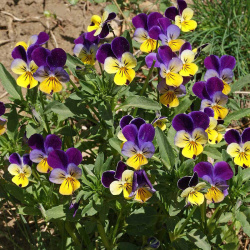 Helen Mount Johnny Jump Up Seeds
Viola tricolor
With cheery purple, yellow, and white faces, this charming wildflower looks a mini version of the pansy. This petite beauty often reseeds itself and springs up voluntarily year after year.Quick View$3.48 Pkt - $14.07 / Oz
Helen Mount Johnny Jump Up Seeds
Viola tricolor
With cheery purple, yellow, and white faces, this charming wildflower looks a mini version of the pansy. This petite beauty often reseeds itself and springs up voluntarily year after year.Quick View$3.48 Pkt - $14.07 / Oz -
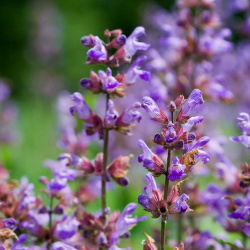 On Sale!
Kitchen Sage Seeds
Salvia officinalis
Perfect for the herb garden, these pungent gray-green leaves can add flavor to meats, stuffing, or tea. It is also known as Broadleaf Sage and has been used in medicinal and culinary gardens for centuries.Quick View$3.48 Pkt - $11.47 / Oz
On Sale!
Kitchen Sage Seeds
Salvia officinalis
Perfect for the herb garden, these pungent gray-green leaves can add flavor to meats, stuffing, or tea. It is also known as Broadleaf Sage and has been used in medicinal and culinary gardens for centuries.Quick View$3.48 Pkt - $11.47 / Oz -
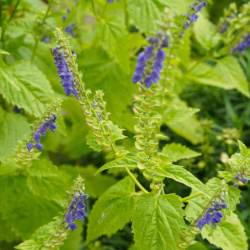 Mad Dog Skullcap Seeds
Scutellaria lateriflora
Discovered by ancient herbalists, this native perennial is highly valued for its medicinal benefits. These tiny, bud-like flowers bloom in pale blue, purple, or white.Quick View$3.75 Pkt - $64.00 / Oz
Mad Dog Skullcap Seeds
Scutellaria lateriflora
Discovered by ancient herbalists, this native perennial is highly valued for its medicinal benefits. These tiny, bud-like flowers bloom in pale blue, purple, or white.Quick View$3.75 Pkt - $64.00 / Oz -
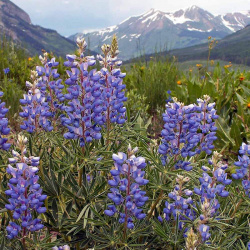 Mountain Lupine Seeds
Lupinus alpestris
True to its name, this violet-blue gem may be discovered high up in the mountains. Amazingly, you can actually grow this mountain beauty right in your home garden! Drought resistant and long-lived.Quick Viewx
Mountain Lupine Seeds
Lupinus alpestris
True to its name, this violet-blue gem may be discovered high up in the mountains. Amazingly, you can actually grow this mountain beauty right in your home garden! Drought resistant and long-lived.Quick ViewxMountain Lupine Seeds
Lupinus alpestris
True to its name, this violet-blue gem may be discovered high up in the mountains. Amazingly, you can actually grow this mountain beauty right in your home garden! Drought resistant and long-lived.
$3.96 Pkt - $26.00 / Oz -
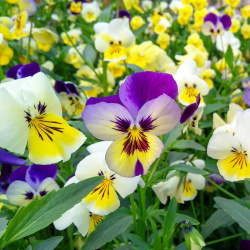 Swiss Giants Pansy Seed Mix
Viola wittrockiana
Worthy of a Swiss window box, these impressive blooms come in a brilliant array of color. This compact plant is technically a perennial but is often grown as an annual. The flowers are edible and can be used as garnishes, or in salads.Quick View$3.48 Pkt - $30.00 / Oz
Swiss Giants Pansy Seed Mix
Viola wittrockiana
Worthy of a Swiss window box, these impressive blooms come in a brilliant array of color. This compact plant is technically a perennial but is often grown as an annual. The flowers are edible and can be used as garnishes, or in salads.Quick View$3.48 Pkt - $30.00 / Oz -
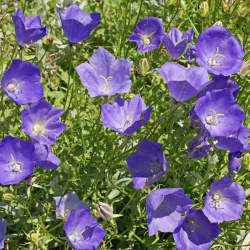 Tussock Bellflower Seeds
Campanula carpatica
A petite plant, this little gem makes a lovely addition to rock gardens. The open purple bells, with a subtle sweet scent, adds to its charm. It is great for small spaces.Quick View$3.25 Pkt - $16.57 / Oz
Tussock Bellflower Seeds
Campanula carpatica
A petite plant, this little gem makes a lovely addition to rock gardens. The open purple bells, with a subtle sweet scent, adds to its charm. It is great for small spaces.Quick View$3.25 Pkt - $16.57 / Oz -
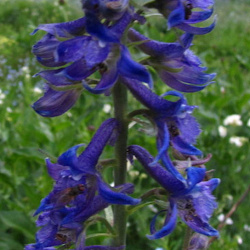 Western Larkspur Seeds
Delphinium occidentale
Native to the western United States, this gorgeous wildflower blossoms in shades of violet. This perennial cousin of the annual delphinium thrives in the open prairies but can also be grown in most garden settings.Quick View$3.48 Pkt - $22.17 / Oz
Western Larkspur Seeds
Delphinium occidentale
Native to the western United States, this gorgeous wildflower blossoms in shades of violet. This perennial cousin of the annual delphinium thrives in the open prairies but can also be grown in most garden settings.Quick View$3.48 Pkt - $22.17 / Oz -
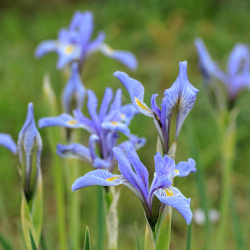 On Sale!
Wild Blue Iris Seeds
Iris missouriensis
Equally at home in mountain meadows and moist woodlands, this native perennial is sure to please. The lovely blue blossoms resemble a domesticated Iris, but they do retain some of their wild appeal, even in a garden.Quick Viewx
On Sale!
Wild Blue Iris Seeds
Iris missouriensis
Equally at home in mountain meadows and moist woodlands, this native perennial is sure to please. The lovely blue blossoms resemble a domesticated Iris, but they do retain some of their wild appeal, even in a garden.Quick ViewxWild Blue Iris Seeds
Iris missouriensis
Equally at home in mountain meadows and moist woodlands, this native perennial is sure to please. The lovely blue blossoms resemble a domesticated Iris, but they do retain some of their wild appeal, even in a garden.
$3.48 Pkt - $11.47 / Oz
The Mountain Region is a diverse area of the Western US that includes the Rockies, Olympics, Sierras, and a host of other mountain ranges. These areas are higher in elevation than the surrounding areas, and so face more extremes in temperature as well as moisture. Generally, the western sides of the mountains are greener than the eastern sides because most of the weather patterns move from west to east. Since the area described here is so vast and variable, you may have to experiment a bit to see exactly what will grow in your micro climate. We cannot tell you exactly what mountain wildflower seeds will grow in your garden because it depends so much on your exact location - a garden a few miles from you may have a totally different climate, rainfall, soils, and daylight. The best thing is to experiment and buy wildflower seeds online, or ask local gardeners or greenhouses if you want localized gardening information.

